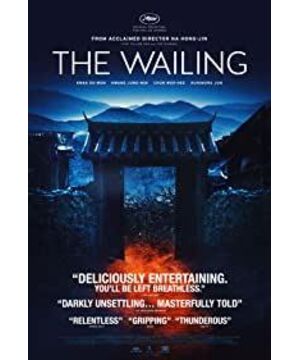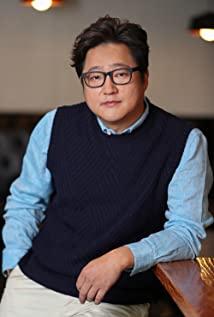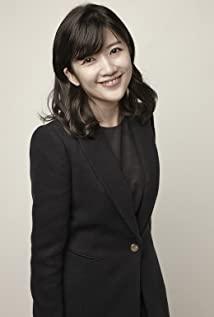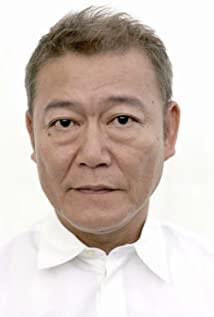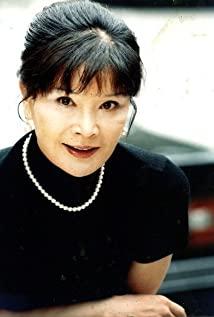"Why don't you have a shadow?"
"You, don't you have no shadow?"
If we exist for a reason, what is the reason for our disappearance? Unknown and doubt bring confusion like thick fog. Seeing is the truth. Is touching flesh and blood? When the devil smiled and stretched out his hand and said "Touch me and see", should we believe in the stigmata on his hand or the horn on his head.
Korea is a multi-religious country, with Buddhism, Christianity and other religions running side by side At the same time, it is influenced by traditional Confucian culture, and South Korea is now the second largest Christian missionary country in the world except the United States. And the homonym of Gucheng (a city that does exist, located in the north of Jeollanam-do, South Korea) in Korean, It is the cry. In addition to the many Buddhist sites and temples in Gucheng, there have also been incidents of mass persecution of Christians. Gucheng's intricate religion and its derived cultural environment are the epitome of current South Korea and the film "" The source of the mottled religious elements in The Crying.
Like the religious content involved in the film, The Crying is not a strictly genre film in terms of style and type. First of all, there are indeed some Pictures that the audience feels physically and psychologically uncomfortable, but on the whole, these pictures only account for a very small proportion, so this movie is not a pure horror movie. It is more inclined to suspense in terms of structure and atmosphere. , or a ghost-type film. But at the same time, the film has made a considerable subversion to the traditional oriental ghost-type film: 1. Ghosts have no shadows and are afraid of the day. The female ghost in the movie is nameless, and the first appearance is in At noon and there are shadows; 2. Animals such as cats and dogs often bark at ghosts. In the movie, the dogs raised by the Japanese only bark at the foreign male protagonist and even attack them. 3. Ghosts have no physical body. Female ghosts Both Wuming and Japanese have had direct physical contact with the male protagonist.
In addition to subverting the traditional Eastern concept of gods and ghosts, the movie also added a lot of Western gods and ghosts elements: the red eyes of the devil and the distorted and sickly bodies of humans after being possessed by demons; The appearance of the living dead (the living dead or zombies tend to be Western, while resurrecting zombies or preventing the resurrection of zombies is a very oriental ritual) and so on.
The result of the mixed elements of the film as a whole is a reflection of reality on the one hand, and intentional actions of the director on the other hand. "The Cry" is a work with a very large amount of information and a very complex content. Therefore, the director treats the film as an open ending, ambiguous work, while giving a certain author's judgment, leaving the audience a space for self-understanding. However, due to the imperfect handling and understanding of the subject matter by the director himself, there are logical bugs in the seemingly many layers of stories no matter which way they are reasoned. It also further led to the polarization of the word of mouth about the plot: either I couldn't understand the meaning of the master; or I scolded the director and screenwriter for being brainless. The inability to sort out the plot makes the open ending even more confusing, and even seriously interferes with the audience's understanding of the entire movie.
In fact, the same problem also appeared in the director's previous work "Yellow Sea". The overly large content and its own blurring affected the advancement of the overall rhythm; in "The Cry", it affected the context of the work. and its meaning. To put it bluntly, it looked very lively, but after reading it, I only watched it. The net was pulled too far and the boat could not be pulled.
The excessive emphasis on the content also leads to the thinness of the characters and the improper handling of the relationship between the characters. For example, the only point of the change of the male protagonist's character is also the key point: he wants to kill the Japanese for his daughter. If you take this transformation out of the whole, you will find that it has very little or no effect on the development of the plot, just a transformation for the sake of transformation. Another example is the key supporting role: the priest's assistant. The identity of this character itself has a certain symbolic meaning, and it should be a character worthy of special attention, but in the film, even in the ending cave scene, the priest's assistant is just a pure perspective provider. It's a pity that the snapdragons that have been foreshadowed in the past, the "original sin" (such as a lascivious woman), the male protagonist's identity as a police officer and the image of the victim have all disappeared in the end.
We often say: the greater the hope, the greater the disappointment. This is actually a matter of the final feeling brought about by the coincidence rate between inner expectations and reality. This is why viewing expectations largely determine the viewing experience.
The South Korean film director Na Hong Jin received rave reviews at Cannes, the box office champion in his home market. The first two symbols frame the basic type and style of the work for us, and the last two news greatly increased the appetite of movie fans and finally formed the viewing expectation value of "The Cry": at least a medium-biased movie. On the suspense film works.
The result is basically the same.
View more about The Wailing reviews


